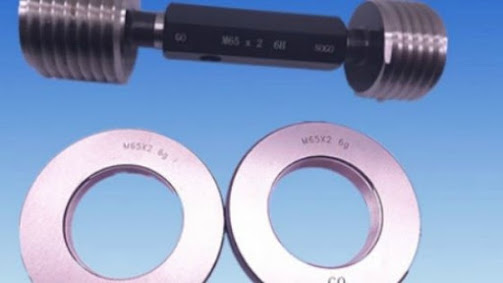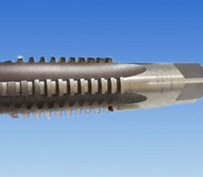Plug Gauges And Their Types
Plug gauges, also known as pin gauges, are metrology instruments used to
measure the inside diameters of holes drilled or moulded into a fabricated
portion, piece, or arrangement. They are critical tools for quality control, allowing
inspectors, machinists, design teams, and others to quickly determine if a
part's attributes fall within the prescribed dimensional tolerance for the
internal diameter measurement.
This gaging method is intended to enable accurate measurements without
using additional, more advanced, and costly measuring instruments such as
internal micrometres by production personnel. Plug gauges suppliers ensure
that they are useful in manufacturing operations where a large amount of
parts is produced because they enable you to determine quality quickly without
having to perform individual hole diameter measurements or
configure instrumentation.
While using plug gauges, it's imperative to remember that the tool just
gives you a yes/no answer – it lets the quality control inspector recommend or
reject a component. It is merely used for determining whether the diameter is
within the tolerance band defined for that specific parameter rather than
taking in its actual metrics.
Plug Gauge Types
Plug gauges come in a variety of types. Here are some of them:
- Go
Plugin gauges.
- No-go
plug gauges
- Blend
Plug gauges with a go/no-go option
Single-ended gauges, such as go plug gauges and no-go plug gauges, have
a handle through which an accurately machined pin or shaft (sometimes referred
to as a member) is implanted and is used to check an element of the hole's
dimensional tolerances. Single-ended gauges are normally sold in pairs, one
with a go plug gauge and the other with a no-go plug gauge.
A go-plug gauge is used to measure the hole's minimal dimensional cap
(i.e. the hole's diameter's bottom tolerance level), which reflects the highest
amount of material left on the component or workpiece. The Plug gauges
suppliers must ensure that their Go-plug gauge fits the hole for an
approval condition. If the go plug gauge doesn't match the hole in the
workpiece, the hole's Dia is too small (inadequate material has been
extracted from the workpiece), and the component must be discarded.
The aim of a no-go plug gauge, on the other hand, is to verify the
hole's highest dimensional cap (the hole's diameter's higher tolerance), which
correlates to the minimum permissible amount of material remaining on the
component or workpiece. So, a no-go plug gauge must not match the hole for the
component to be considered. If the no-go plug gauge didn't fit into the hole,
that means the hole's diameter is less than the maximum limit, and the
component can be accepted.
If, on the other hand, the no-go plug gauge fits into the hole, it means
the hole's diameter is too wide (i.e., above the prescribed upper tolerance
limit), which implies that Plug Gauges Suppliers have removed
too much material during the machining process, and now the component must be
discarded.
Lastly, the Blend Plug gauge with a go/no-go option is the amalgamation
of both variants.




Comments
Post a Comment